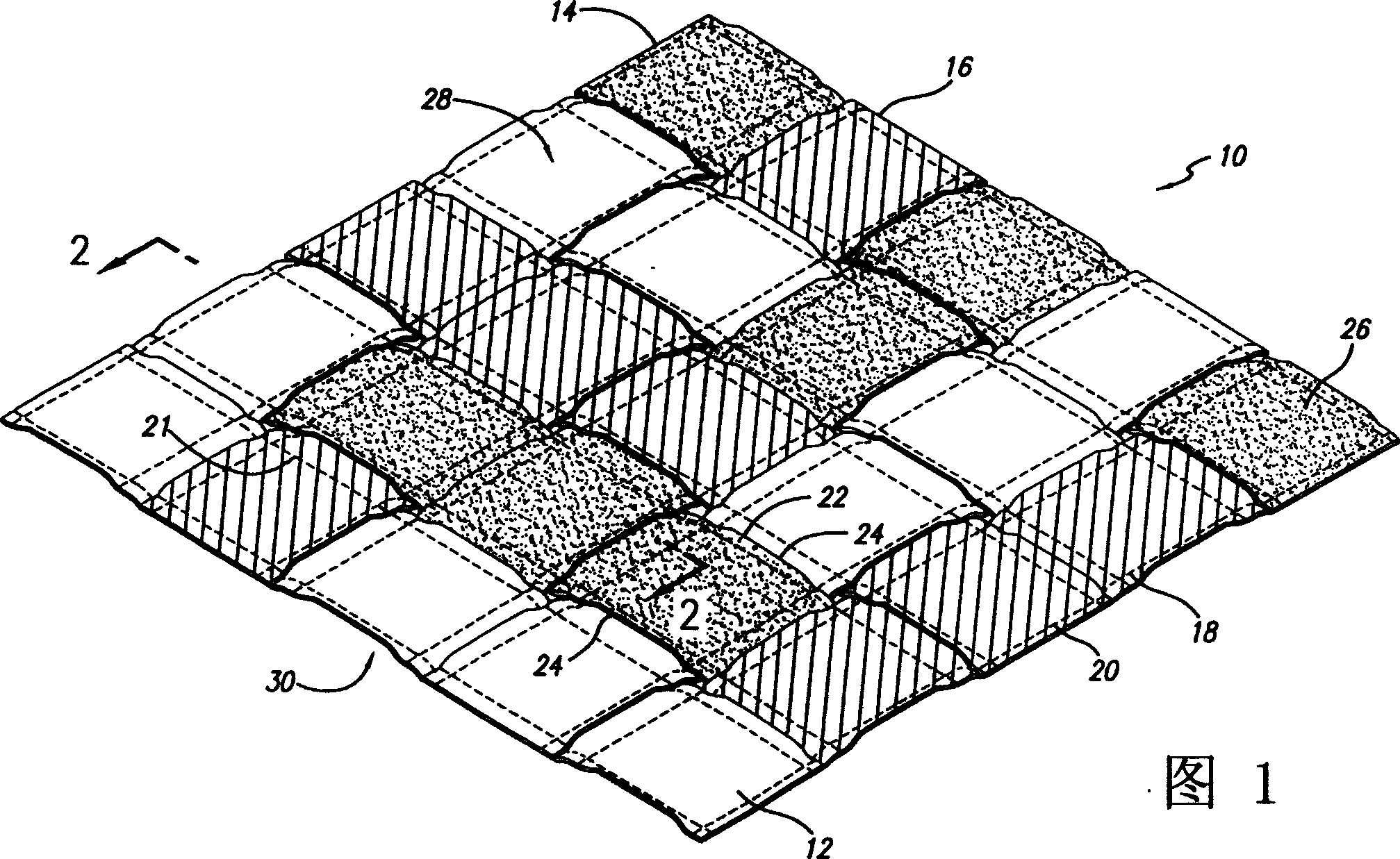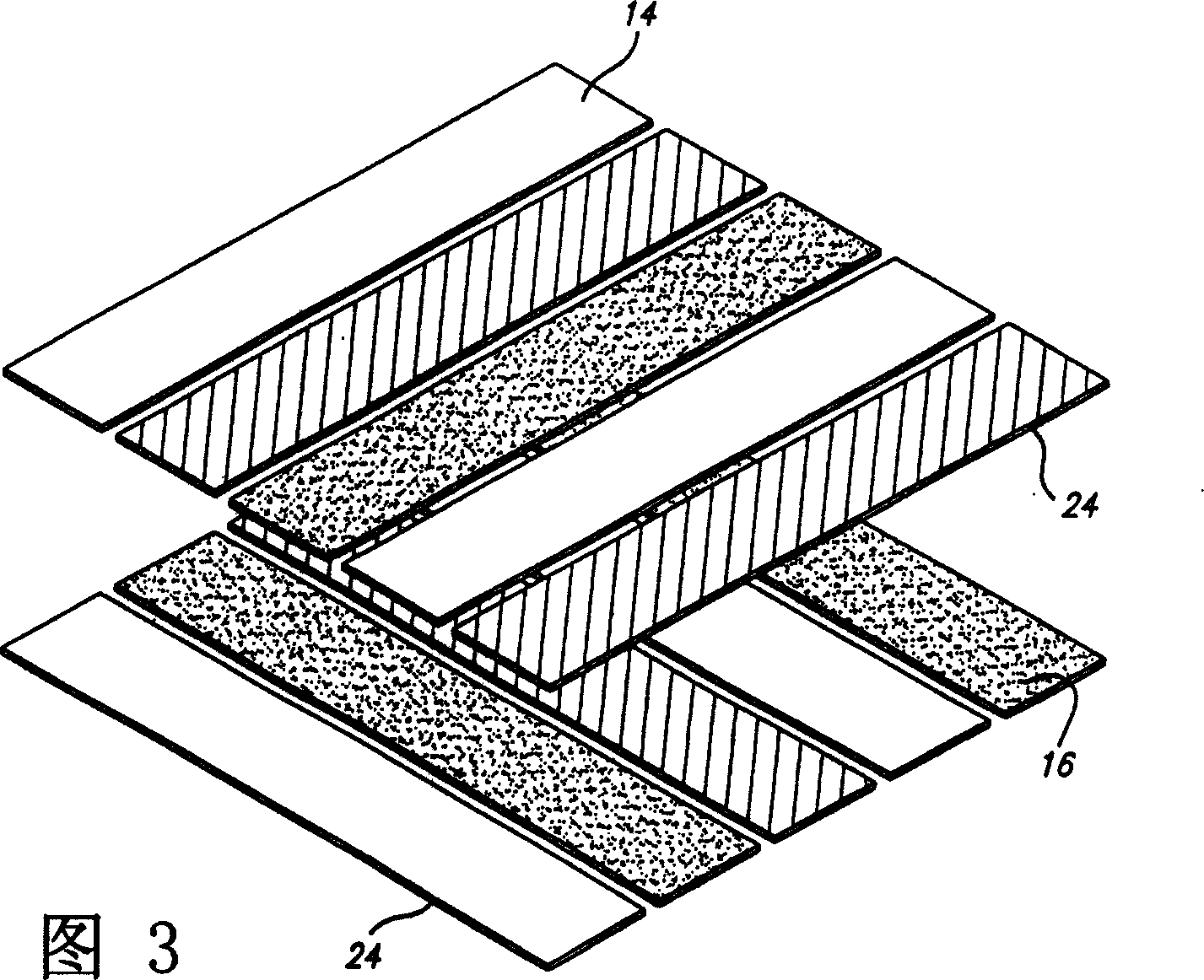Flat-fell seam textile and method
A technology of textile products and textile materials, applied in the field of textiles, can solve the problems of not attracting great attention and the unattractiveness of seamed quilts.
- Summary
- Abstract
- Description
- Claims
- Application Information
AI Technical Summary
Problems solved by technology
Method used
Image
Examples
Embodiment Construction
[0020] See the attached drawings for more particularity. FIG. 1 is a perspective view of the present invention showing a patchwork textile fiber article 10 . The textile fiber product 10 can constitute any form of bed covering (such as a quilt) or a blanket shawl, and can also be used for other purposes. Fiber product size to determine. For example, a quilt that is approximately seven (7) feet by seven (7) feet can be made from a series of fourteen (14) individual strips 14 each six (6) inches wide by seven (7) )inch. Each strip 14 is juxtaposed with the next. A second series of fourteen (14) individual blocks 16 each six (6) inches wide and seven (7) inches long are positioned above and transversely across the first series of blocks 14 . As shown in FIG. 4, each strip 14 is then interleaved with strips 16 until all strips are interleaved and lie relatively straight. The interleaved panels 14, 16 are joined together by employing rows of stitching 18 along parallel lines 2...
PUM
 Login to View More
Login to View More Abstract
Description
Claims
Application Information
 Login to View More
Login to View More - R&D
- Intellectual Property
- Life Sciences
- Materials
- Tech Scout
- Unparalleled Data Quality
- Higher Quality Content
- 60% Fewer Hallucinations
Browse by: Latest US Patents, China's latest patents, Technical Efficacy Thesaurus, Application Domain, Technology Topic, Popular Technical Reports.
© 2025 PatSnap. All rights reserved.Legal|Privacy policy|Modern Slavery Act Transparency Statement|Sitemap|About US| Contact US: help@patsnap.com



